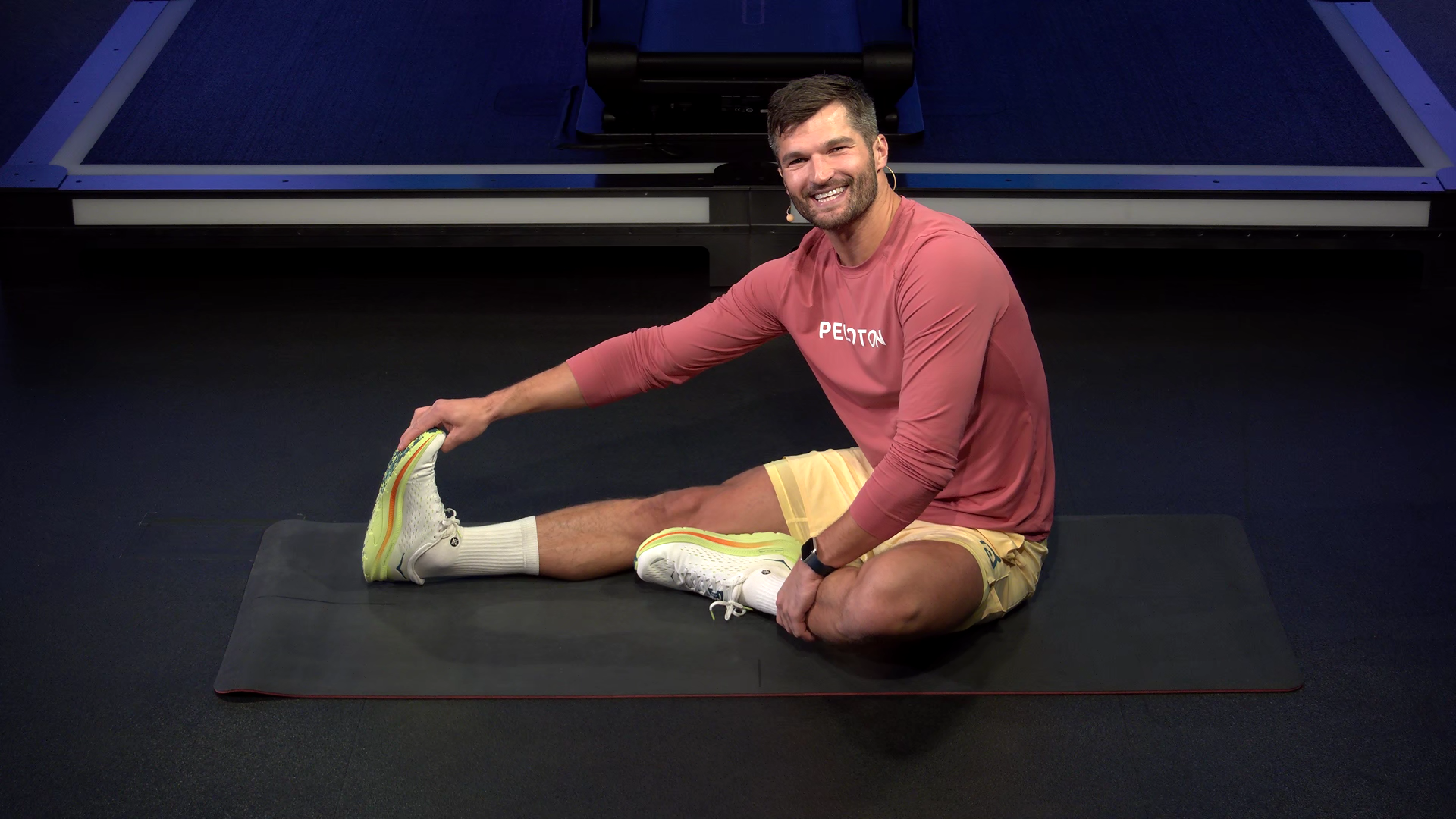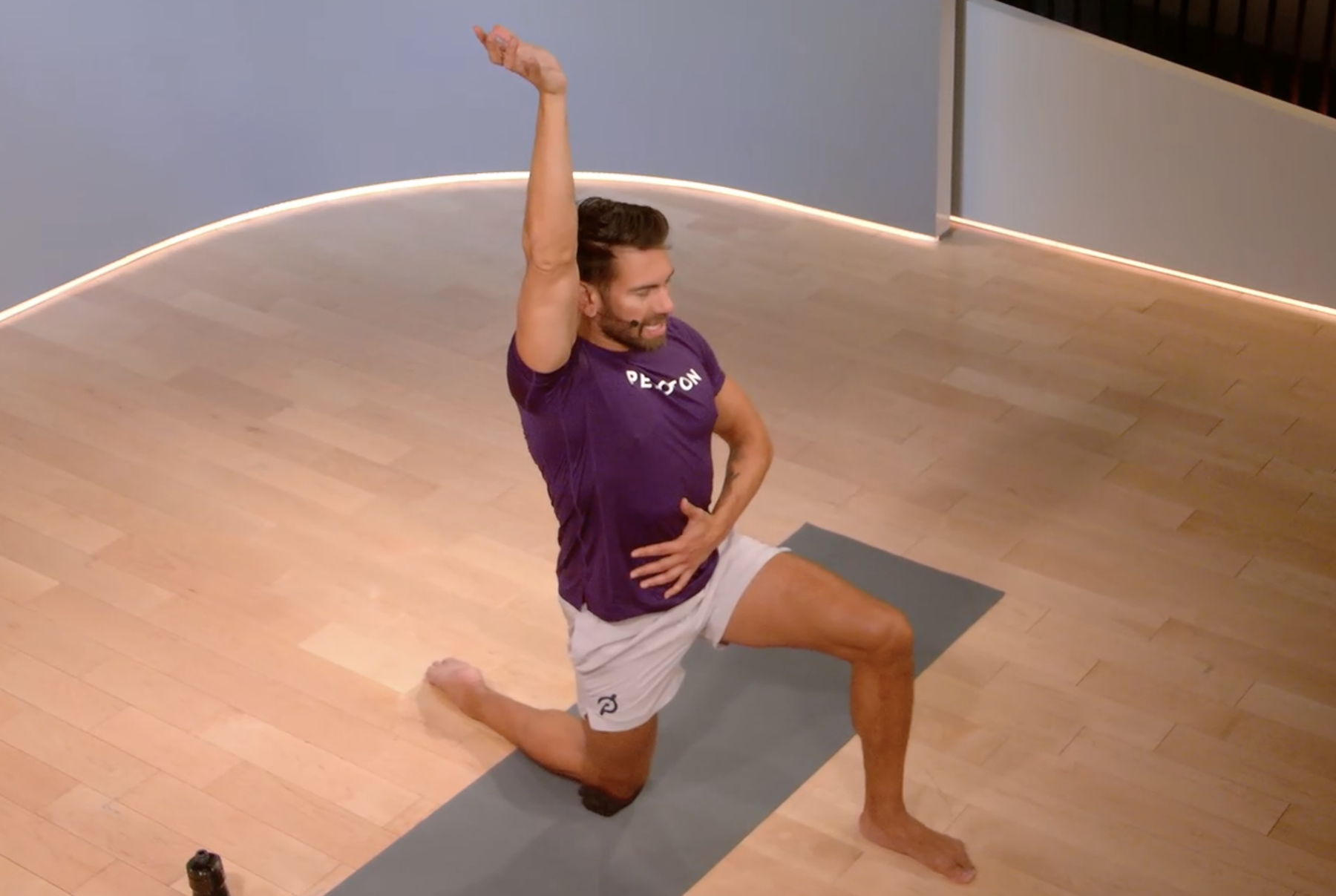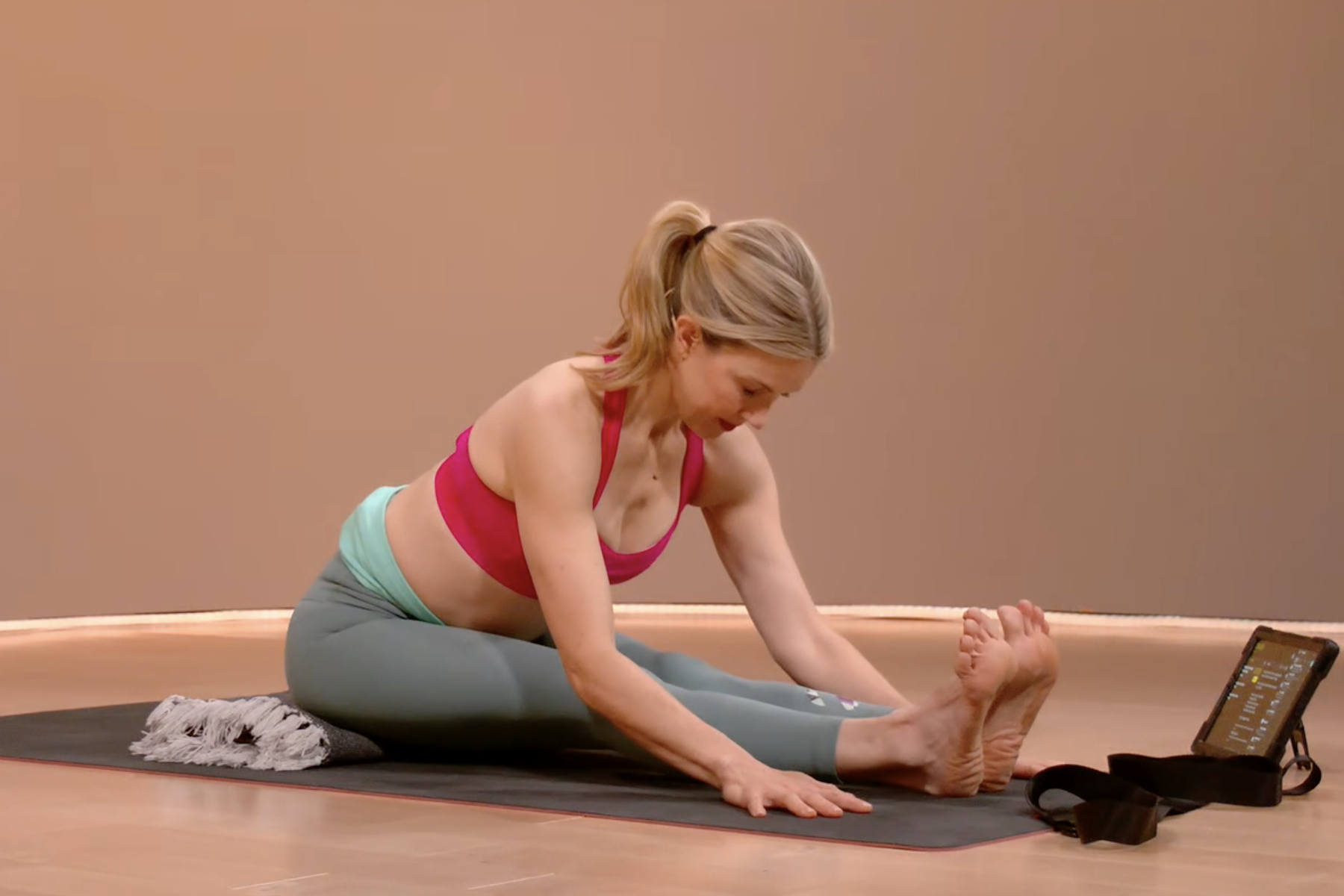
What You Need to Know About Static Stretching—and When to Do It
A beginner’s guide to integrating it into your routine and five moves to start with.
By Emily Laurence•
What Is Static Stretching?
How Stretching Affects Fitness Performance
5 Static Stretches to Try
When Is the Best Time to Do Static Stretching?
Tips for Integrating More Stretching Into Your Workout Routine
Takeaway
When it comes to working out, most people look forward to the part that gets their heart pumping. For you, maybe it’s clipping into your Peloton Bike and getting an early morning ride in. Or maybe you like getting lost in a long run out in nature. While stretching may not be the most exciting part of your workout, it’s still important to do.
There are two main types of stretching: dynamic stretching and static stretching. Dynamic stretching involves movement and mimics the type of fitness you’re about to do, while static stretching requires holding a stretch for a certain length of time. In order to reap the maximum benefits of stretching, it’s important to know how the two differ, the specific benefits of static stretching, and when the best time to do static stretching is.
What Is Static Stretching?
“Static stretching involves holding a muscle in one position without movement,” says Ashley Kumar, a physical therapist at Palm Health. Kumar explains that the main benefits of static stretching are to increase flexibility, relieve tension, and increase the range of motion in the specific muscle you’re stretching.
Peloton instructor Jon Hosking says, “It can often be challenging to make the time and commitment to a good routine of static stretching in your training, but for me it represents the final piece of the puzzle.” Rest assured that if you prioritize and make time for static stretching, you’ll feel better in your body and you can even improve your athletic performance.
The Difference Between Static and Dynamic Stretching
While both static stretching and dynamic stretching are important, they serve different purposes. “Dynamic stretching is typically done before a workout as a way to warm up the body,” she says. “It’s a way to prepare your joints and muscles for activity, so the dynamic stretches done before a workout mimic the activity you’re about to do.”
For example, if you’re about to go for a long run, you may warm up by doing butt kicks and high knees, two dynamic stretches that utilize the same muscles needed to run. Kumar says that dynamic stretches like these help reduce muscle stiffness by improving range of motion.
This is different from static stretching, where a move is held for a period of time, typically between 30 and 90 seconds. Instead of a warm-up, it’s used as a cool-down. Since the muscles are warmed up from physical activity, it’s easier to hold the stretches. “The benefit of static stretching is that it helps improve flexibility and reduce recovery time,” Kumar says. Scientific research backs this up, showing that holding a stretch for just 10 to 30 seconds is enough for increasing flexibility.
Jon says that another benefit of static stretching is that it can help improve posture, something else scientific research backs up. This is because it can undo some of the effects sitting for a prolonged amount of time has on muscles and joints, which can create imbalances in the body.

Peloton App
Access thousands of classes with no equipment needed.
How Stretching Affects Fitness Performance
Static stretching can help with flexibility and recovery, but can it make you a better athlete? Scientific research says that it can. Researchers found that doing static stretching regularly could lead to better muscle strength and power. Another study found that static stretching led to improved athletic performance in exercises that involved flexibility, jumping, sprinting, and endurance strength.
“Static stretching increases blood flow and improves range of motion,” Kumar says. This helps protect against wear-and-tear during exercise. She adds that when your muscles and joints have a wider range of motion, you can move easier during exercise, leading to a competitive edge.
Static stretching also feels really, really good after working out—a benefit not to overlook. “It’s a great moment to relax, ground yourself and take stock of your performance after a workout,” Jon says. Similar to enjoying a Child’s Pose or Savasana at the end of a yoga class, you’ll start looking forward to the ritual of rewarding your body with static stretching after a hard workout.
5 Static Stretches to Try
Knowing the benefits of static stretching is important, but you aren’t going to reap any of the rewards unless you know how to do it. Below are five moves Kumar recommends.

1. Hip Flexor Stretch
“The hip flexor stretch is extremely important to do if you sit all day or live a sedentary lifestyle,” Kumar says. It helps improve mobility in the hips and lower back.
1. Kneel on the floor on one knee. Bend your other knee at 90 degrees in front of you.
2. Shift your weight forward. You should feel the stretch in your hips and thighs.
3. Hold for 30 seconds. Then, switch legs.

2. Hamstring Stretch
Especially if you’re a runner, cyclist or lift weights, there’s a good chance your hamstrings are tight. Show the back of your legs some love with this stretch, which helps relieve soreness.
1. Sit on the floor with your legs extended out in front of you.
2. Reach forward and try to touch your toes. If your toes are out of reach, place your hands around your shins or ankles instead. Hold for between 30 and 60 seconds.
3. Pectoral Stretch
For a static stretch that targets the upper chest, Kumar recommends a pectoral stretch. This one can be done in a doorway and can help undo the damage of hunching in front of a computer or over your phone.
1. Stand in a doorway, stepping one step forward.
2. Raise your arms and bend your elbows at 90 degrees. Lean your forearms on the sides of the door.
3. Gently push your chest forward, leaning into the stretch. Hold for between 30 and 60 seconds.
4. Upper Trap Neck Stretch
Feel tightness in your neck? If you spend a lot of time at the computer or using your phone, there’s a good chance you do. Kumar says an upper trap neck stretch can help relieve this tension, as well as improve posture and shoulder mobility.
1. Sit or stand up straight. You want to maintain a neutral spine while doing this stretch.
2. Place one hand on top of your head, gently applying pressure as you tilt your head toward your shoulder.
3. Hold the stretch for 30 seconds. Don’t forget to keep breathing while you hold this stretch. Gently release the stretch and repeat on the other side.
5. Overhead Side Stretch
An estimated 75% to 85% of Americans will experience back pain at some point in their life. Whether it’s something you’re dealing with now or want to avoid in the future, doing static stretches that target your quadratus lumborum (a muscle located in your back, running from your pelvis to your bottom rib on the sides of the spine) can help. This is one of Kumar’s favorite static stretches targeting the back.
1. Stand up straight and reach your arms overhead.
2. Tilt to one side, feeling the stretch all the way through your hips and arms.
3. Hold for 30 seconds. Repeat, reaching your arms overhead to the other side.
When Is the Best Time to Do Static Stretching?
Both Kumar and Jon say that the best time to do static stretching is after working out—and even just a few minutes is enough. “Whether it’s after a heavy weight lifting session, soccer game, basketball game, or another type of workout, it’s beneficial to do some static stretching,” Kumar says.
Jon adds to this, saying, “The aim of static stretching is to either maintain or increase your level of flexibility and range of motion, and ideally this is done after a workout when your muscles are warmed up and more supple.”
When it comes to holding a static stretch, this depends on if you want to actually lengthen your muscles or maintain their current state. “Maintenance stretching should involve holding a stretch for between 10 and 15 seconds, whereas developmental stretches should be held for more than 30 seconds in order to deepen the stretch and extend the length of your muscles,” he says. “Over time this will aid you in how easy you move, prevent the risk of injury, and help to correct any postural imbalance you may have.”
Tips for Integrating More Stretching Into Your Workout Routine
When Jon moves through static stretches, he says he likes to focus on the spine first, to help with overall range of motion. Next, he hits all the major muscles in his legs. He likes to finish static stretching with moves that require lying down. “I find [lying down stretches] to be the most relaxing because I don’t have to focus much on balance and coordination,” he says.
Kumar says that what’s most important is to be mindful of what your individual body needs. If you feel tightness in a specific area, that’s your body telling you it could benefit from a static stretch that targets those particular muscles. She also says it’s important to avoid overstretching, which can lead to hypermobility and increase the risk of injury.
Takeaway
Remember: You don’t have to spend tons of time static stretching to benefit from it. Spend a few minutes doing a few moves that feel right for you and you’ll be doing your body a world of good—and you just might improve your performance, too. If you’re looking for a place to start, try Peloton Stretch Classes on the Peloton App.

Peloton App
Access thousands of classes with no equipment needed.
This content is for informational and educational purposes only and does not constitute individualized advice. It is not intended to replace professional medical evaluation, diagnosis, or treatment. Seek the advice of your physician for questions you may have regarding your health or a medical condition. If you are having a medical emergency, call your physician or 911 immediately.
Level up your inbox.
Subscribe for a weekly dose of fitness, plus the latest promos, launches, and events.
By providing your email address, you agree to receive marketing communications from Peloton.
For more about how we use your information, see our Privacy Policy.






